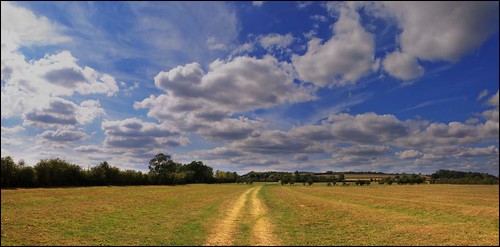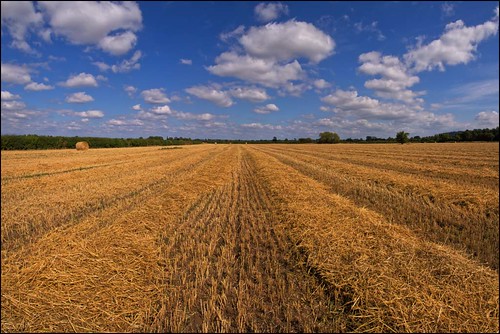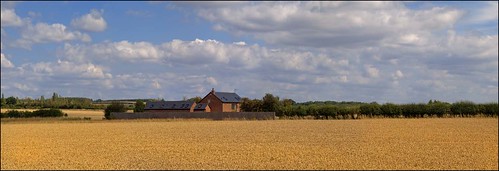Olympus E-PL1 12mm f/2 lens
Following on from yesterdays test shots with the E-PL1 I was so impressed with the raw files conversions from the 12mm f/2 lens on the E-PL1 that I took that camera out yesterday and left the E-P3 at home.
Olympus E-PL1 12mm f/2 lens
Once again very impressive results. I wrote in my review of the 12mm lens that I had obtained sharper results on m4/3 with other lenses. I was at the time referring to m-mount lenses. Having the possibility to work with raw file conversions from this lens in Photoshop ACR, now I'm not so sure. I'm hard pressed to think of any other m4/3 compatible lens I've used that is sharper than this.
Olympus E-PL1 12mm f/2 lens Multi-image panoramic stitch.
Olympus E-PL1 12mm f/2 lens Multi-image panoramic stitch.
Olympus E-PL1 12mm f/2 lens Multi-image panoramic stitch.
I have also been using a Voigtlander 75mm f/2.5 Heliar over the past couple of days as my telephoto option, in addition to the 12mm. That gives pretty impressive results too.
Olympus E-PL1 Voigtlander 75mm f/2.5 Heliar lens Multi-image panoramic stitch.
In a review of the E-P3 I saw recently, I read this.
"But the big question is IMAGE QUALITY! How does the E-P3 compare to the other cameras? Well, in all reality it is up there and close but you will still get better overall image quality from the X100, X1, and Ricoh GXR.”
Actually I disagree with this. I've owned an X100 and X1 and yes they are pretty impressive. But when I put a top quality lens on a m4/3 camera the results at low ISO's look just as good to me. The Voigtlander I mentioned above, my Zeiss 50mm f/2 T* Planar and yes the 12mm f/2 give me results that I haven't seen bettered. The Olympus 12mm for example looks sharper to me wide open than the Fuji lens on the X100.
Regarding the Ricoh GXR. I looked at some of the samples in the Dpreview article on the m-mount module for the Ricoh GXR.
Yes, they look nice, but I'm getting results just as good on m4/3 with my quality lenses. Plus I'm getting a lot more versatility. As I indicated yesterday I went out with an AF Olympus lens and a MF m-mount lens. When you think of the possible combinations of lenses I could have gone out with, you begin to see the advantages of m4/3.
Of all the digital cameras I've ever used, and I've used a lot!, the best image quality I've ever obtained comes from a Leica M9. However second to that is m4/3. No matter what other reviews say, no matter what DxO come up with, for my uses i.e low ISO outdoor work, I prefer m4/3 (with good lenses of course) to any other system other than the Leica. That includes Nikon and Canon DSLR's and yes the Fuji X100 and Leica X1.
This is why I keep using it, and keep coming back to it, no matter what else I use. As I've written before, I've been having eye problems and thought that I would have to stop using cameras with non-optical viewfinders. However I've been able to find a solution. My desire to come up with this solution was, to a large extent, to enable me to use the E-P3 and 12mm.
While I'm very pleased with the Nikons (Cameras and lenses) I've been using recently, m4/3 is still my preferred option for landscape and location work, when I want to use AF lenses (and often when I'm using MF too) Part of this is because of the lightness and size, but its also about the IQ too. I've often talked about the "glossy" look that I think m4/3 has, and certainly I love the sharpness I get and the colour which I think is superb.
I do take account of the lesser performance at higher ISO's, though that is not much of an issue for me, and the reduced dynamic range, though I do think that is overated, but for my uses m4/3 works very well. The depth-of-field advantages, the weaker AA filters, the absence of dust spots all contribute to the usefulness of the system for me. By combining images I can produce very high resolution files and I've had many of my m4/3 images used for large-scale reproduction, advertising campaigns and all manner of other uses.
The people who buy my pictures have no problems with it whatsoever. They don't read reviews, look at graphs or debate on internet forums. They just use their eyes. I've had m4/3 shots used as A3 double-page spreads, on the front covers of glossy magazines, and on billboards. I've seen them used on TV programmes, for advertising in magazines, newspapers and on the web. I, and others I know, have used m4/3 for events, weddings, fashion, landscape and almost every other use you can imagine. I'm far from the only professional photographer who uses the system and to imagine we all just use Canon and Nikon DSLR systems is far from the truth.
I actually get quite angry when I see m4/3 described as some kind of amateur, hobbyist system, which is inferior to APS-C. I've never thought that, and the first time I looked at the results from my G1 just a few short years ago, I realised that there was something special here. I still think that, and since buying that G1, m4/3 has, by some distance, been my most used system.
I wrote yesterday (somewhat light-heartedly) that the Sony NEX-7 (if the specs. are correct) would be all I need. That may be true, but it doesn't mean that I would buy one (though I probably will!) and it certainly doesn't mean that I've got any plans to abandon m4/3.
Come back in a few years time and I'll probably be writing very similar articles to this.





